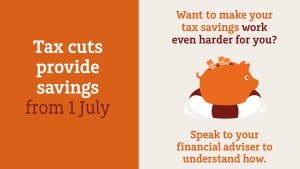After another year of double digit growth, many first-time buyers have been left shaking their heads in disbelief. Even those looking to upgrade the family home are having to stretch their budgets further than ever.
For many would-be buyers, the speed of house price growth is far outpacing their ability to save. It’s also outstripping wage growth by a significant margin.
Wages vs house prices
CoreLogic crunched the numbers and found that while wages have risen by 81.7 per cent in the past 20 years, the value of housing has increased by 193.1 per cent.
The size of the gap depends on your location, but the trend is widespread. The difference was most pronounced in Tasmania, where prices have risen by 294 per cent in the last 20 years, compared with a 79.6 per cent rise in wages.
The challenge for first homebuyers
First homebuyers are facing the perfect storm of low-interest rates, low wage growth and rapidly rising prices.
With interest rates at an all-time low, keeping your deposit in a savings account at the bank isn’t going to be much help.
So what can you do to increase your chances of getting into the property market?
Should you give up and invest your savings instead, in the hopes of a good return?
How to save a deposit
First of all, it’s important to realise that while this problem is bigger than you, there are things you can do to help yourself get into the market.
- Don’t give up. There are options to help you get into your own home. If your ideal home is out of reach, consider expanding your criteria for where and what you’re willing to buy. Once you’re in the market, you can work on upgrading. Consider whether you can buy together with someone else, a sibling, partner or parent perhaps. And don’t forget to factor in government support, like the first homebuyer grant and stamp duty concessions.
- Once you know how much you’ll need for a deposit, create a realistic budget to help you manage your money.
- Save hard. Make manageable, consistent contributions to your savings from every pay cheque. Add your tax return and any bonuses that come along. Pretty soon, you’ll have a decent chunk of money put aside.
Put your money to work for you
You’ve managed to save $20,000 or more – good on you! With that much cash to work with, it’s time to put your savings to work for you. Here are a few options that could help increase your funds.
First Home Super Saver Scheme (FHSSS)
This scheme allows you to save a deposit through your superannuation fund. You can make up to $15,000 in voluntary super contributions each year, which can be withdrawn in future to purchase your first home. At the moment you can only contribute a total of $30,000, but that’s set to rise to $50,000 next July.
This is not a straightforward scheme, so take your time to research it thoroughly.
The potential tax savings are the main advantage. Your voluntary concessional contributions will be taxed at 15 per cent inside super, instead of your normal marginal tax rate.
Once you decide to withdraw your funds, you’re subject to a withdrawal tax. According to the ATO, that’s calculated at your marginal tax rate, plus a Medicare levy of 2 per cent, minus a tax rebate of 30 per cent.
Additionally, you’ll earn a return on the funds you’ve invested, but only at the shortfall interest charge rate, which is the 90-day bank bill rate plus three per cent. Still, that’s a lot better than most savings accounts right now.
Keep in mind that there are strict rules around withdrawing your funds, and it can take up to 25 days for your money to be released. You may have to pay a 20 per cent tax if you sign a contract to buy or build before receiving your funds.
Exchange traded funds (ETF)
Given the difficulty of saving for a housing deposit in a low-interest, low-wage growth environment, is it time for more aggressive tactics?
It’s often not recommended to invest your deposit savings in the share market, due to the volatility. In a negative growth year, the funds you invest could actually decrease in value, leaving you with less money for your deposit than when you started.
However, if you have a longish investment timeline (5+ years), and don’t mind the risk, you might consider purchasing shares in a managed fund like an ETF. ETFs are baskets of shares that track an index, commodity, region or theme. You can choose how much risk you want to take on by investing in a high-growth (most risk), growth, balanced or conservative fund.
The potential upside to share investing is the returns. The ASX S&P 200 has returned 5.87 per cent over the last five years, and 5.38 per cent in the last 10-years, which are both better than a savings account.
High-interest savings account
You can still find some high-interest savings accounts that are paying over and above the standard everyday account. The benefit obviously, is that your underlying balance isn’t at risk. Use a comparison site, or even better, call your bank and ask what they can offer you. Just be careful to check for fees and other conditions, which can eat into your balance.
Term deposit
In the past, this was a popular choice to help boost your savings. Term deposits pay you an agreed return, depending on how long you choose to invest your funds. You can invest for several months, or several years. However, with interest rates so low, the return on a 12-month term deposit is currently below one per cent. Look around, as you may be able to find something with a higher rate of return than your everyday savings account.
For anyone looking to buy or upgrade their home, it will take hard work and determination to get there. Don’t be afraid to expand your criteria and look at alternatives outside of your ideal location. Good money management will help and be savvy when it comes to earning a return on your savings.
This article first appeared here in Money and Life.







